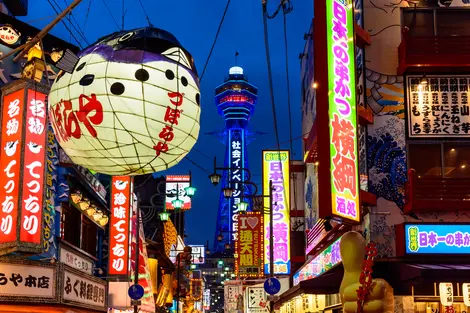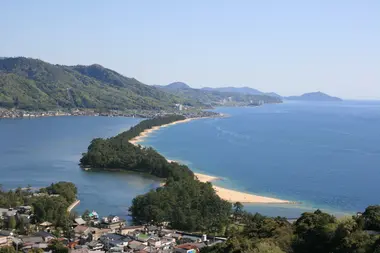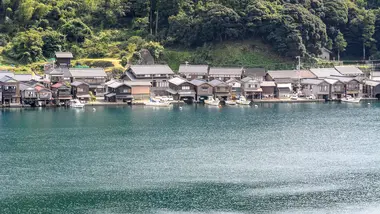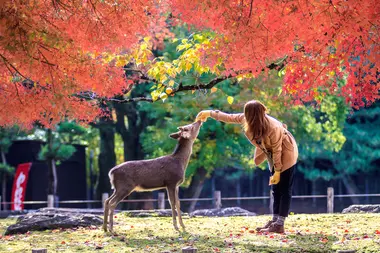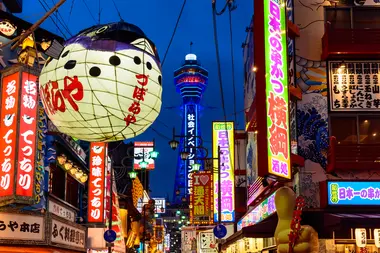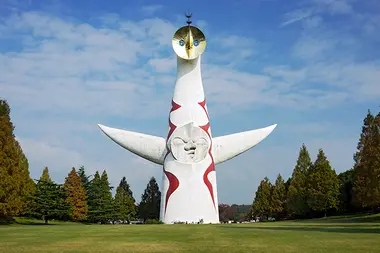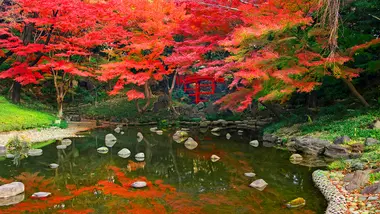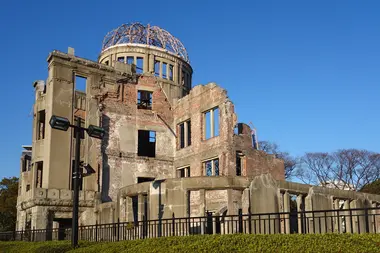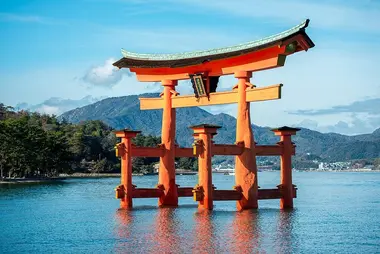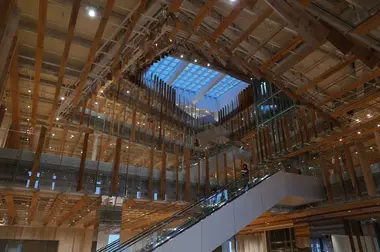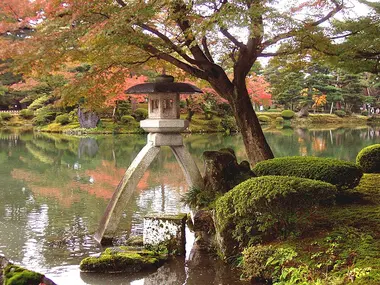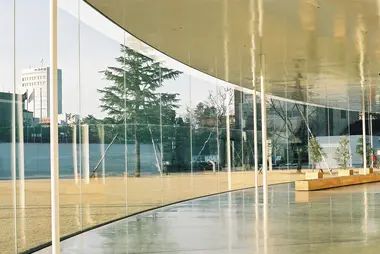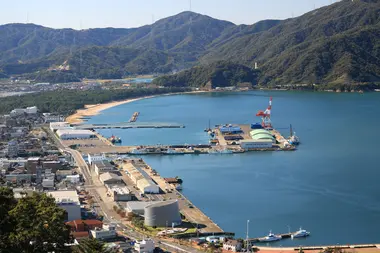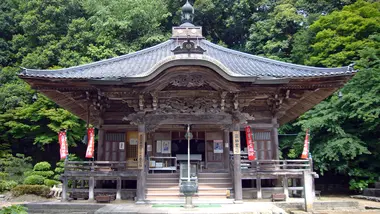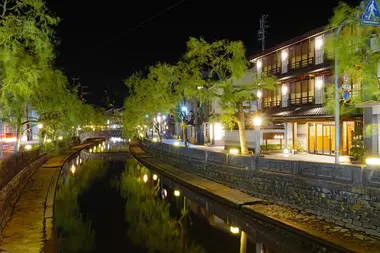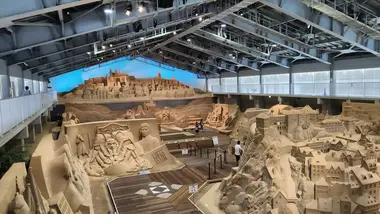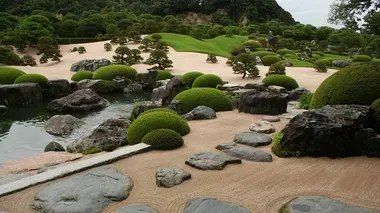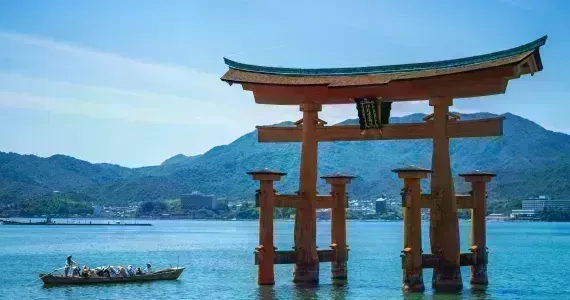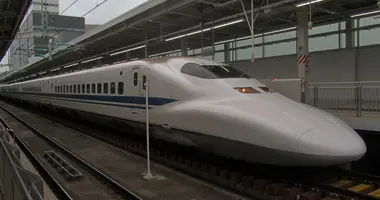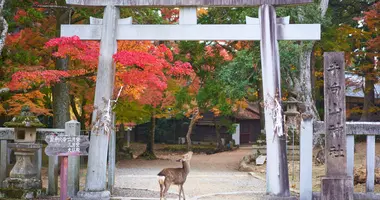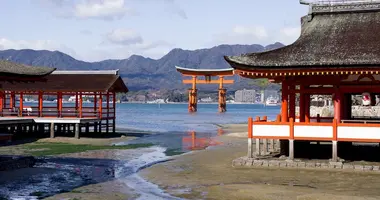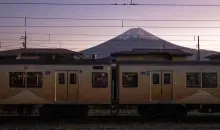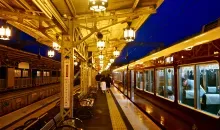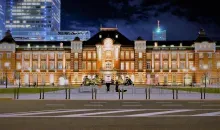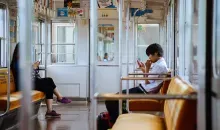Discover Western Japan's Hidden Gems
Of Japan’s four primary islands, Honshu is the largest and most populous and is often considered the nation’s mainland. There are a medley of destinations to visit on this island, but some of its most culture-rich locations are in its southern half, spanning from the Hokuriku region, through Kansai, and then down to Chugoku. A majority of the transportation in this part of the country is operated by JR West, and to optimally explore the area, they offer the JR West All Area Pass. This pass allows for unlimited access to a number of different railways, bus routes, and even ferry boats in the area for seven whole days.
For 26,000 yen for adults and 13,000 yen for children (12 years old and under), visitors can ride staple transportation facilities such as the Sanyo Shinkansen that goes between Shin-Osaka Station and Hakata Station, the Hokuriku Shinkansen going between Toyama and Kanazawa, the Thunderbird Express Train that goes between Kanazawa and Shin-Osaka, and many more! But with this wide range of transportation options and a very large coverage area, what exactly is there to check out in West Japan? The possibilities are truly endless, as the collection of regions that are found here are all cultural hot spots in their own right.
Hokuriku, where you will find amazing destinations such as Toyama, Kanazawa, and Fukui, is blessed with the Japanese Alps, granting the region beautiful scenery and an incredible bounty of seafood due to the rich Japan Sea waters off its coasts. This area can be a great spot to exchange for your JR West All Area Pass and start your journey, since it’s the most northern region that’s covered!
Kansai, one of the most eclectic, varied, and famous regions in Japan, is composed of seven prefectures, some of the most famous being Kyoto, Osaka, and Nara. With two of Japan’s ancient capitals along with other great destinations such as Okayama and Hyogo, Kansai is rich with history while also being a center for delicious food, exciting nightlife, and leisure activities. With the Kansai Osaka Expo being held in 2025, this will be a great region to explore unhindered with the JR West All Area Pass.
Chugoku, translating to “middle country,” makes up the most southern parts of Honshu Island, with its largest city being Hiroshima. The city of Hiroshima is an essential visit for those with an interest in history, as both its recent and ancient past have been instrumental to the formation of Japan as it stands today. But rest assured that the other prefectures in Chugoku, such as Okayama, Tottori, and Shimane, have plenty to offer as well, providing some of the most unique natural and cultural attractions the country has to offer, such as canal-laced historic districts, golden sand dunes on the coast, and a world-renowned art museum built around a traditional garden.
The JR West All Area Pass even allows travelers to dip down south into the upper portion of Kyushu. Travelers can head to Yamaguchi, listed as one of “52 Places to Go in 2024” by the New York Times due to its compact size, dense with historical monuments, and then to Fukuoka, the culture-rich capital of the prefecture with the same name, which is home to a world-renowned food culture and cozy atmosphere that is heavily beloved by its locals.
With the All Area Pass, there will be no stones left unturned in West Japan. With one whole week’s worth of sightseeing available at one price, it’s hard to find a better deal for an unforgettable trip to Japan! Take a look at some of our favorite destinations in the northern and southern parts of West Japan in the two articles below! Be it the high-speed Shinkansen bullet train, the more leisurely, but just as efficient local trains like the Thunderbird Express, JR local lines and buses to reach the spots more off the beaten path, and even the ferry out to Miyajima in Hiroshima for one of the most iconic spots in the entire country, rest assured your time exploring Japan with the JR West All Area Pass will be convenient, affordable, and filled with memories.
Kyoto
The former capital of Japan up until the Meiji Restoration, Kyoto is one of the most popular destinations amongst visitors to the country. The city is famous worldwide for its long-standing history that is still witnessable today, and the city of Kyoto’s layout is designed so that its 17 different UNESCO World Heritage Sites, like Kyomizudera and the Kinkaku and Ginkaku temples, have room to shine alongside modern architecture. But the greater Kyoto Prefecture has plenty to check out outside from the original capital city. Amanohashidate is located in Miyazu Bay, around a 4.5-hour journey from Kanazawa with a transfer at Kyoto Station in the ancient capital.
The view is characterized by a long-reaching sandbar that serves as a land bridge that connects the two ends of the bay. It’s best seen by the number of different observation points that allow for an overhead view. The land bar itself is lined with over 7,000 pine trees, along with the Isozhimizu Freshwater Well, whose waters have been cherished since the Heian Period in Japan and are even cited as one of the best 100 freshwater springs in the country.
Also on the coasts of Kyoto’s northern area is the quaint village of Ine. Ine is a fishing village about a two-hour direct bus ride away from Amanohashidate. Naturally, the town's primary industry is fish and seafood, and here, a bounty of deliciously fresh seafood can be found being prepared at the docks and on the plates of local restaurants.
What’s available largely depends on the season, but its most famous offerings include buri (amberjack) and aori ika (reef squid). But there’s much more to do in Ine than just eat! With amazing coastal geography, there’s a great deal to see on the waters of the bay itself, and visitors can take a look around with either the Ine Ferry or Sea Taxi.
Nara
Go back even further in time and visit the capital before Kyoto: Nara! A short distance from Kyoto with transit covered by the JR West All Area Pass, this is another essential destination in Kansai that represents Japan’s rich culture and heritage. This was the center of Japan during the period of the same name through most of the 8th century AD, and there are remnants of this time remaining that visitors can see firsthand.
One of the best spots to see this is, naturally, the Nara National Museum, only a 15-minute walk from Kintetsu Nara Station. Artifacts illustrating Japan’s culture throughout the many centuries can be found here, including historic paintings, wooden Buddhist statues, arts depicting historic Japanese Shinto deities, and more!
Another great thing about the museum is that it’s located right in Nara Park, a location synonymous with the city of Nara as a whole! There is a ton to do in the park, the most famous being interacting with the wild-roaming deer! These deer are notable for their distinct behavior, as they are very used to human interaction, though it's best to practice proper caution and etiquette, as the deer are still wild animals who should be treated with respect, and their familiarity with visitors means they can be a bit aggressive at times.
But regardless, they are an essential part of Nara’s charm, and visitors can purchase feed to give to the deer, who will actively approach them, and oftentimes deer will even bow when receiving things—truly something that can be seen only in Nara!
Osaka
Continuing the journey through Kansai takes us to the largest city in the region: Osaka! Home to over 2.5 million people, this is an exciting city with a vibrant atmosphere rich in both fun activities and authentic culture. Osaka is particularly known for its very eccentric set of locals who like to have a fun time, a point of pride for many of them. This is also a great location to see a definitively Japanese urban sprawl, one reminiscent of vintage Japanese media from the bubble era and spots with old-school sensibilities.
Of the most definitive places to visit, the Shinsekai district has one of the most distinct atmospheres. The name "Shinsekai" actually translates to “new world,” making it somewhat ironically named, as, in the modern day, it’s primarily known for its retro vibes, largely unchanged aesthetically from 1912 when it was first established. Simply taking a stroll through the area feels as if going back in time, with neon lights and narrow alleyways lined with restaurants and shops. Also to be found here is one of the most definitively urban views in Japan, where the silhouette of the cityscape perfectly frames Osaka Tower in the distance.
For another step back in time, art enthusiasts also ought to make their way out to see the iconic “Tower of the Sun” (太陽の塔), created by legendary artist Taro Okamoto.
Initially erected for the World’s Fair Expo ‘70, the structure exists alongside a dedicated museum within the Expo Commemorative Park. The inside of the structure is accessible to visitors but requires a reservation at least one day in advance, but for such an immersive experience with a piece of Japan’s history, it’s well worth the effort! Also, be sure to leisurely explore the park grounds, a great escape from Osaka’s bustling center.
Okayama
Leaving Kansai’s Osaka, Okayama Prefecture serves as the gateway into the Chugoku region. Here, some of the most enchanting and distinctive views that Japan has to offer can be found. Its capital city of the same name has a population of a bit over 700,000 people, a fair amount less than cities like Osaka and Kyoto, but it offers a righteous set of attractions worth going out for.
In Okayama City, Koraku-en, one of the three great gardens of Japan, can be visited; the other two are Kenraku-en in Kanazawa and Kairaku-en in Mito City! Koraku-en Garden was founded around 300 years ago by the local Samurai authorities at the time. At the center of the garden is a structure called Enyo-tei House, originally erected as a living quarter. Within the garden, there is also a Noh theater and a tea plantation. A must-see event during the summer and fall is the limited illumination event known in English as the “Late Night Garden of Dreams,” where candles and other light fixtures light up the garden at night.
Another place indicative of Okayama’s charms is the Kurashiki Bikan district. One of the most distinctive characteristics of this historic district is the number of canals flowing throughout, with rideable gondola boats passing through them.
During the Edo Period, this area was significant to the rice trade, and the canals were developed to easily navigate between the rice storehouses. Be sure to take a guided boat ride around the area and appreciate the distinct architecture. Also in Bikan district are a number of unique art museums, such as the Kurashiki Museum of Folkcraft, the Kurashiki Archaeological Museum, and the famous Ohara Museum of Art, home to a world-renowned art collection!
Hiroshima
Hiroshima is undoubtedly a name known internationally. For many, it is largely due to its tragic past as the site of the first ever atomic bomb attack. However, it’s this exact place in history that makes it such an essential destination to visit for those coming to Japan, as the city has risen from the ashes to become a symbol of progress, hope, and culture. Additionally, this is a city with a history extending way past the last century, as it is home to some of Japan’s most ancient and storied attractions.
For those coming to Hiroshima, the sites erected to commemorate the attack in 1945 truly are must-visits. “The Atomic Bomb Dome” is likely the most iconic of attractions. This is a building that was present on the day of the attack and, as such, took damage that is actually visible today. While there was damage sustained, the core structure stood, and the building was left as it was on that day as a reminder of the events. The site of the building against the skyline of contemporary Hiroshima is both haunting and hopeful, a reminder of the city’s past juxtaposed with the lively urbanscape it is today. Also in the area is the memorial park, with its number of different attractions to see and a museum, all of which are also worth a visit.
To go even further back in time and to see Hiroshima’s significance to Japan’s ancient history, the sites of Miyajima cannot be missed! For many, the most recognizable of the Miyajima is its Torii gate, said to appear as if it's floating in water during high tide.
The gate, however, is merely the entry point to the actual shrine grounds, also found out on the water and comprising buildings and accompanying annexes. The gate and main shrine are both accessible by ferry, and furthermore, the ferry ride is fully covered by the JR West All Area Pass and JR Pass, making it all the more worth seeing in person!
Toyama
Starting in Hokuriku, Toyama is a prefecture in Japan, just 2.5 hours away from the capital of Tokyo. Its name translates to “rich mountain,” and it very much lives up to the moniker, lined with towering mountains of the Japanese Alps and home to one of Japan’s three holy mountains: Mount Tateyama, alongside the famous Mount Fuji and Mount Haku in Ishikawa.
For many, climbing an entire mountain may seem like a heavy task, but for residents of Toyama, climbing the fabled natural landmark is a rite of passage, often done in late elementary school to middle school. Ascending up to the mountain’s peak can be done in around 2 hours from the Murodo Terminal, which is accessed via bus. At the top of the holy mountain, Oyama Shrine is composed of three different structures, all in dedication to the gods of Mount Tateyama. And of course, the view from the top of the mountain is the perfect thing to refresh after the journey up.
Back more towards sea level, Toyama is also a prefecture with a lauded art culture, in particular its glass arts that are on best display at the Toyama Glass Art Museum, near the center of Toyama City. The building also actually doubles as the city’s main public library.
The building itself is seen as an architectural highlight, designed by the famous Kengo Kuma; however, the art inside the building is just as marvelous to look at. Numerous artists, largely local to Toyama and from other parts of the world, have their glistening works on display, following themes that vary depending on the special exhibits at the time. Everything from grandiose glass sculptures to traditional vases and glass items meant to mimic flowers and plants can be found, fully displaying the versatility of glass as an art medium.
Ishikawa
Bordering Toyama to the west is Ishikawa Prefecture and its capital city of Kanazawa. A city relatively untouched during World War II, much of Kanazawa’s historic districts and traditional arts have been preserved throughout the years, and the city exists today as a capsule of both historic Japan seamlessly blended in with modern aesthetics and sensibilities.
Take a visit to Kenroku-en, one of the other three great gardens of Japan, alongside the previously mentioned Koraeku-en in Okayama. This garden features a unique layout with varying elevations throughout and a number of beautiful ponds and fountains. There are also charming tea houses and cafes around, and at night during spring and fall, special illumination events are held to display the cherry blossoms and then the autumn leaves, respectively. These illuminations are often free of charge and allow visitors to leisurely stroll through the park with the cool transitional season breeze.
Head down one of the slopes leading from Kenroku-en and visit the lauded 21st Century Museum of Contemporary Art. The building consists of a number of large glass panels and a circular-shaped structure. Inside, different hallways wind throughout, with different rooms displaying a number of exhibits.
The museum's central attraction is an interactive display of what, initially, seems like an ordinary swimming pool. In actuality, it can be seen from two different elevations, one above the "water" and one below it, giving visitors the illusion that there are people simply walking and breathing inside the pool. It’s a favorite exhibit for art appreciators throughout the country.
Fukui
In 2024, the Hokuriku Shinkansen will extend from Kanazawa Station out to Fukui Prefecture, and this extension will be accessible with the JR West All Area Pass. This opens up a whole new destination for travelers to explore directly from Tokyo, as Fukui was previously only accessible via car, highway bus, a transfer from Kanazawa Station, or a limited express train from Kansai. With this extension, the Hokuriku Shinkansen will fully live up to its name and provide access to the entirety of the region.
Past Kanazawa, stops at Komatsu and Kaga Onsen in Ishikawa, and then Fukui City and Echizen Takefu will become available, along with even more! And at the terminus will be the city of Tsuruga! Tsuruga is actually the only port city that can be found in central Japan, and the nature of such a city can be found throughout the city. Take a look at its distinct red-bricked warehouse as a representation of such! But being a seaside port city means that beautiful beaches line the coast. Tanoura Beach, in particular, is a popular option for those both in Kansai and Hokuriku and is a great spot to relax and take in the sites of the Japan Sea!
Another benefit of its coastal location is the abundance of quality seafood. Pay a visit to Nihonkai Sakai Machi, a market offering great local seafood, with the famous crabs of Fukui being a particular standout. Indulge in the delicacies of Fukui right at the market, direct from vendors or food stalls selling things such as sushi and kaisendon!
Hyogo
Next to Kyoto is Hyogo Prefecture, one of the geographically largest prefectures in Kansai, with its southern border being the coast of the Seto Inland Sea and the northern one being the coast of the Japan Sea.
Near this more northern coast is Kinosaki Onsen, one of the most recognizable onsen resort towns in all of Japan. Kinosaki onsen is well known for its seven “mystic” onsens, so-dubbed due to the historic belief that the onsen water’s healing properties came from the blessings of Shinto deities. In the modern day, scientific research has shown that the mineral makeup of natural hot springs in Kinosaki provides an array of health benefits, such as pain and fatigue relief.
One of the standout features of the onsens at Kinosaki is that all seven allow for tattoos, something that isn’t standard at more traditional bath houses.
Aside from the calling-card hot springs, visitors can also make their way up the Kinosaki Ropeway that ascends Mount Daishi. Naturally, there is a great panoramic view to see from the cable car as well as from the top of the mountain, and hidden away in the mountain foliage is Onsenji Temple. The temple was initially built in 738 AD, and around that time, it served as a pilgrimage site for those wishing to visit the onsen town. There is also an option for hiking part way up the mountain for those with more time and who wish to spend some quality time with nature.
Tottori
Continue down south, and you’ll come across Tottori, the prefecture with the smallest population in all of Japan, having only around 570,000 people throughout its entirety. But it’s this distinct title that makes Tottori such an interesting place to visit. What exactly does a region with such a low population density have to offer? Plenty is the answer, as the prefecture is home to one of Japan’s most standout natural wonders: the Tottori sand dunes.
Located right on the coasts, the standard beaches that would typically end after a few meters instead roll on and on to different elevations, creating long-running sand dunes and essentially creating a desert that would otherwise not be found anywhere else on the Japanese archipelago.
During winter, a distinct scene of golden sand mixed with stark white snow creates even more wonder. In the warmer months, visitors can even take a ride on camels, something most would never expect to do on a trip to Japan!
But the sandy wonders of Tottori go beyond just the dunes. Nearby, the Tottori Sand Museum is like no other. Very impressive, grandiose sand sculptures are on display, utilizing sand taken from the dune area. The museum itself is closed from January to part of April, but there is a new thematic exhibit every year, often taking inspiration from world destinations. Examples of previous exhibitions include dedications to the scenery of China, the United States of America, and Ancient Egypt!
Shimane
Our final destination to highlight with the JR West Area Pass is Shimane Prefecture, right next to Tottori Prefecture and right above Hiroshima. This is also a prefecture with a relatively small population, predominantly rural, but with its own countryside charms.
But among the quieter environments of Shimane is the capital city of Matsue. Matsue was a prominent location during the Tokugawa Era of Japan, and the standing Matsue Castle is a representation of such.
As one of the few standing feudal castles in Japan. It even has the wooden structure of its main keep intact, while other castles in Japan have been reconstructed with a concrete basis. While it is a smaller castle compared to other ones found in Japan, its significance to Japanese history makes it fully worthwhile.
One of the most lauded art museums, not only in Japan but throughout the entire world, the Adachi Art Museum presents beauty in art and craft in multiple ways. The most prominent is, naturally, the artwork.
The Adachi Museum’s crown jewel is their permanent collection of works from the legendary Yokoyama Taikan. Taikan’s prominence during the pre-WWII era comes from his grandiose works featuring Japanese landscapes that are cited to absorb viewers right into them.
But just as famous at the museum is the Japanese garden the building is structured around. This garden has consistently been rated as the number one garden in Japan for over two decades. It truly is as much of a work of art as the works on display in the exhibits.




